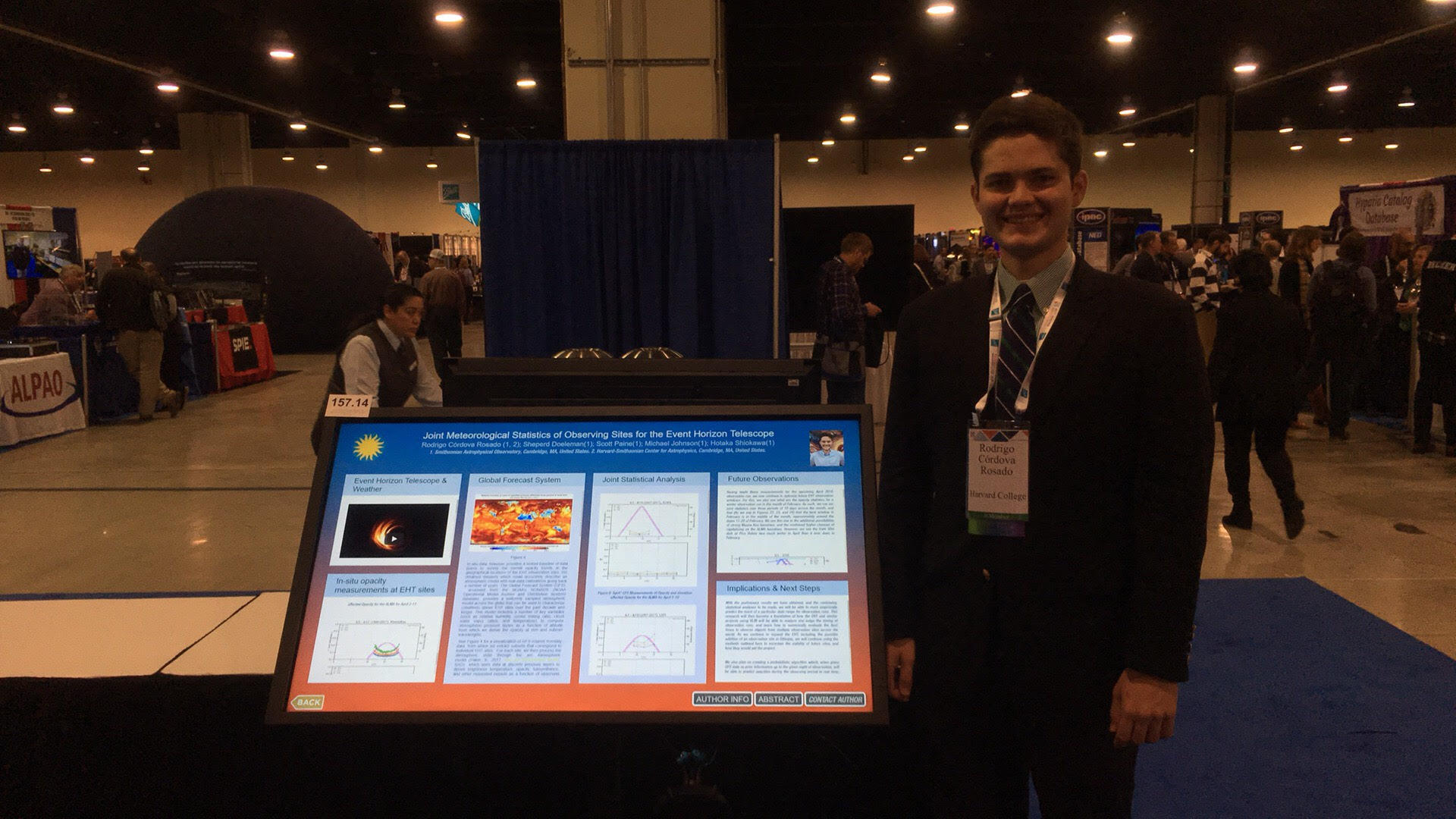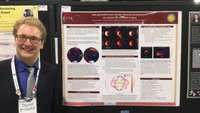The winter meeting of the American Astronomical Society (AAS) is the biggest yearly meeting of astronomers and astrophysicists in North America. More than 3000 students and professionals meet to present and discuss the latest progress on many interesting topics at the forefront of research in astronomy and astrophysics. The 231st meeting of the AAS was held in National Harbor, Maryland, between January 8 and 12 2018. Among many others, it was attended by three talented undergraduate students who dedicated the previous summer to research on topics of great importance to the Event Horizon Telescope. Below are short descriptions of their work and some photos of the beautiful posters they presented at the AAS meeting.
|
Chelsea Crowley, Cape Cod Community College It is believed that almost all galaxies have black holes at their centers. Imaging a black hole is a primary and important objective to answer many scientific questions. In order to get the first image of a black hole, scientists are using the Event Horizon Telescope (EHT). The EHT is a network of radio telescopes located around the world and linked by atomic clocks. The main goal of the EHT is to capture an image of two nearby black holes, one at the center of the Milky Way (Sagittarius A*) and the other in Virgo A (M 87). There are many previous methods in imaging that have successfully produced high quality images, however we propose a new full-closure sparse modeling approach. This new technique has proven to be a superior method for imaging black holes. |
||
 |
||
|
Rodrigo Cordova Rosado, Harvard College Due the VLBI (Very Long Baseline Interferometry) techniques used by the Event Horizon Telescope (EHT), we must take into account the weather patterns at each telescope’s geographical location. In order to optimize the scheduling of future observations, we have developed tools to model the signal transmittance through the atmosphere at each EHT site using the past 10 years of the NOAA’s Global Forecast System (GFS) data describing the atmospheric state. These tools allow us to determine the ideal observing windows for EHT observations and to assess the suitability and impact of new EHT sites. We describe our modeling process and statistics, compare our models to in-situ measurements at EHT sites, and discuss the implications of weather limitations for planned extensions of the EHT to higher frequencies, as well as additional sites and observation windows. |
||
 |
||
|
Daniel Palumbo, Massachusetts Institute of Technology The Event Horizon Telescope (EHT) is a multinational Very Long Baseline Interferometry (VLBI) network of dishes joined to resolve general relativistic behavior near a supermassive black hole. The imaging quality of the EHT is largely dependent upon the sensitivity and variety of relative positions of its many constituent telescopes. The EHT already contains many highly sensitive dishes, including the crucial Atacama Large Millimeter/Submillimeter Array (ALMA), making it viable to add small telescopes in low Earth orbit, which rapidly form a large range of baselines with ground dishes. We develop orbital optimization tools for space-based VLBI stations. We find that small orbiting dishes provide short time scale coverage that drastically improves dynamical reconstructions of simulated movies of Sgr A* when compared to the ground-only EHT. |
||
 |



